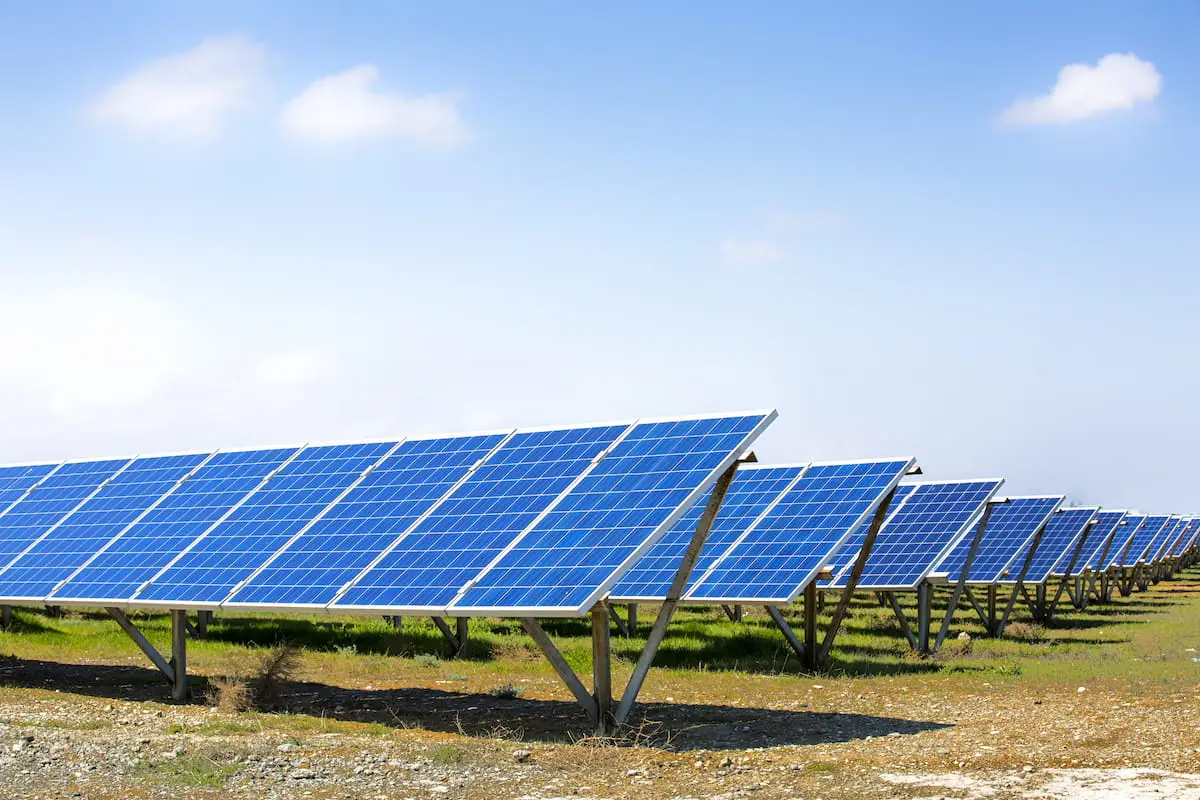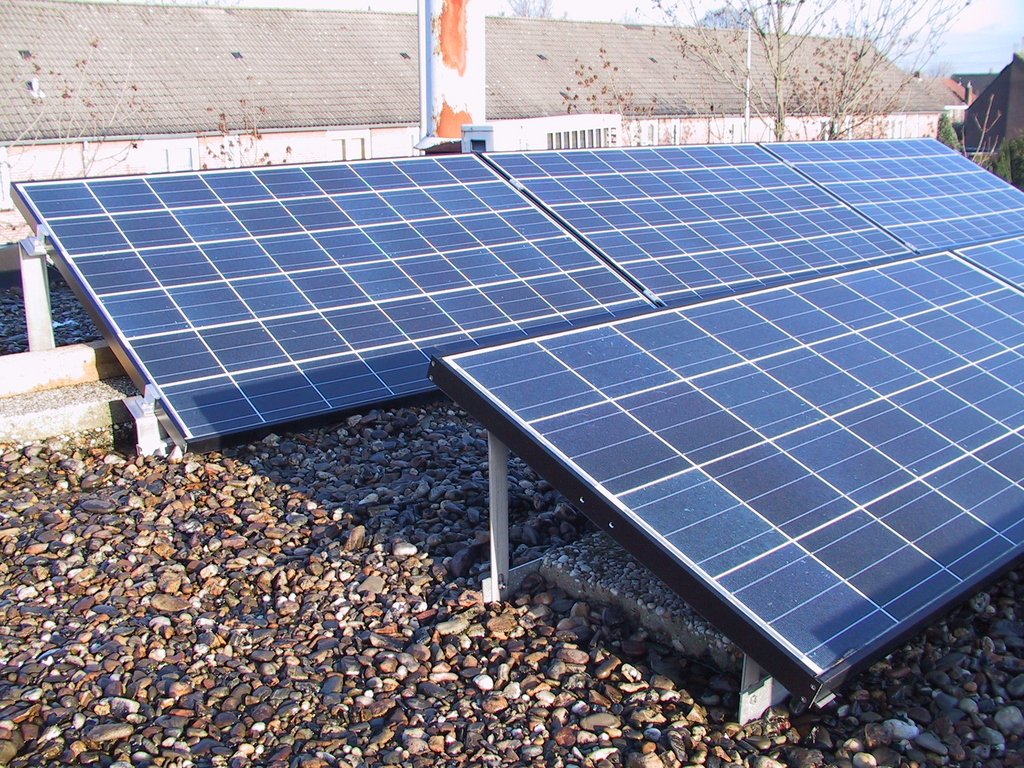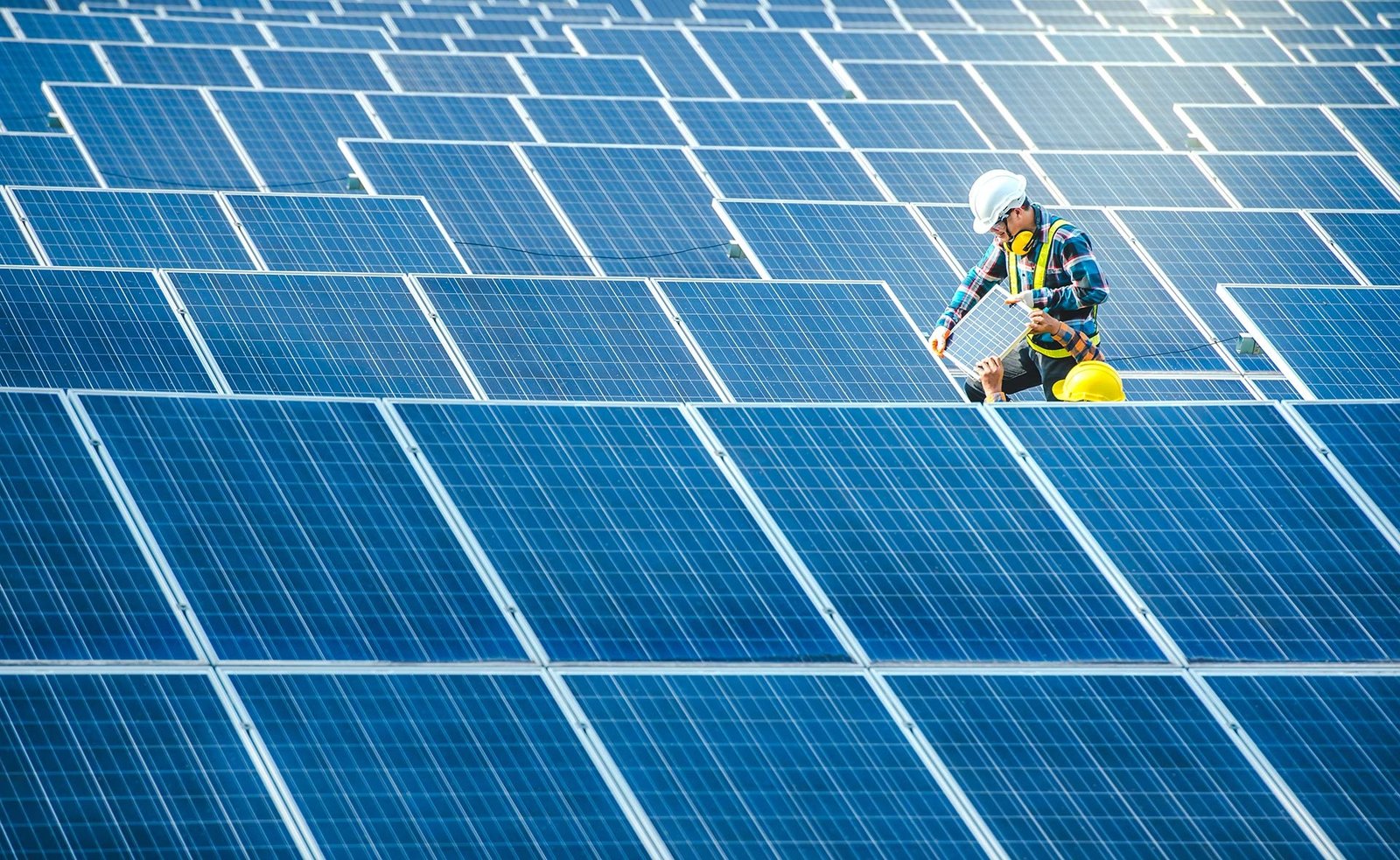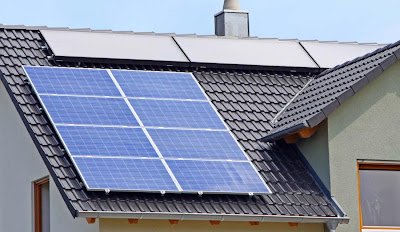
How many solar panels do I need for a country house?
Many clients ask us how many plates do I need for a country house? . If it is important to plan photovoltaic self-consumption, it is even more so when we seek to have an installation isolated from the network so as not to fall short or make an oversized installation.
Since being disconnected, everything will depend on our ability to produce electricity with our solar panels and accumulate it in the solar batteries.
Our advice is to contact a team of professionals with extensive experience in these types of installations, which seem the same as those for self-consumption, but whose installation and dimensioning have a series of peculiarities that mean that not all installers have enough experience to carry them out.
At Cambio Energético we have more than 10 years of experience in all types of solar panel installations and we can advise you and make you a sizing, design and installation adjusting to your energy needs.
But if what you want to know is more or less what type of solar panel installation you need for a country house, in this article we will tell you the necessary steps with which you can estimate the number of solar panels you need for your country house. countryside.
The easiest way to know how many solar panels you need for a country house
If you don’t want to get complicated, the easiest way to find out how many panels you need for your country house is to use our search filters for solar kits for isolated houses on our website:
On our website, you can search according to the type of use you are going to make of the photovoltaic installation in your country house, either to use it as a habitual residence or as a second residence for vacations or weekends.
It is also very important to select the consumptions that you are going to make; that is, the electrical devices that you will need to use in your country house. And a last filter that you can use is the one referring to the components that you want to install in case you already have a rough idea of what you want.
It is a very intuitive tool and in a few seconds you will have the answer to what you are looking for to get an idea of the needs you have.
But if you want to know the steps to take to estimate how many solar panels you need to install in your country house, keep reading.
How to calculate the energy needs of an isolated house to install solar panels
The first thing we need to know in order to estimate the photovoltaic installation you need is how much electricity you need .
And here it is very important that you quantify not only the kWh you consume throughout the day but also the hours where you have those consumptions . Why? Because you will also have to know the electricity that you are going to consume in the hours when you do not have enough solar production . In this way, you can calculate the capacity of the solar batteries that you will have to install.
But how to calculate your consumption of an isolated house without connection to the electricity grid?
If you are going to have a need for electricity similar to what you have in your usual home, you can look at your electricity bill to find out the monthly and annual electricity consumption. If you have a smart meter, you can also register on the digital platform of your marketer and check your consumption.
Now, if the consumption you plan to have in your isolated installation is going to be different from that of your usual home, it is appropriate to make an estimate of it.
As you know, your consumption consists of the sum of the energy needed by all the appliances and electronic devices you use in a period of time (specifically in one hour). So, what you will have to do is list the electronic devices that you plan to use throughout the day, the power that each one has and the number of hours that you will use them.
You can use the following table model that we present to you with an example as a reference.
| Apparatus | Units | Power (W) | hours / day | Total (Wh/day) |
|---|---|---|---|---|
| Led light | 4 | 7 | 8 | 224 |
| Laptop | two | 65 | 8 | 1,040 |
| TV A + | 1 | 31 | 6 | 186 |
| Blender | 1 | 750 | 0.30 | 225 |
| Microwave oven | 1 | 800 | 0.20 | 160 |
| Fridge A++ | 1 | 32 | 24 | 778 |
| mobile charger | two | 13 | 4 | 104 |
| TOTAL POWER REQUIRED | 2,717 |
According to this example, the daily consumption would be 2,717 Wh per day. Over a month (30 days), it would be 81,510 Wh, which is equivalent to 81.5 kWh per month and 978 kWh per year, approximately.
If the country house is your habitual residence, you will have to make a more exact calculation, bearing in mind that it is always better to have too much energy than to fall short, and you must also bear in mind that the consumption you may have in the future is greater , so we always recommend that once the calculations have been made, we oversize the installation a little so as not to fall short in the short or medium term.
If it is a second residence, you do not have to be so thorough in the calculation, although our recommendation is that you never adjust to the exact calculation, but leave an upward margin to avoid falling short at a certain time.
What photovoltaic production do I need with solar panels for a country house or isolated house
Once you have estimated your consumption, you need to know how much photovoltaic energy you are going to require to satisfy said consumption. And for this, we must take into account different issues:
- On the one hand, the power that each solar panel can generate . Depending on the manufacturer, you can find different powers, as well as the number and size of photovoltaic cells.
- On the other hand, the efficiency of the system . Generally, in the process of converting direct current into alternating current, around 10% of solar energy is usually lost. Therefore, to make the calculations, you must dimension the installation taking into account a production of 90%.
- Thirdly, the hours of sunlight that the country house has where you plan to make the photovoltaic installation. Depending on whether the installation is in Galicia or Andalusia, you can find differences of up to 25%.
In the following table you can find examples of provinces with their Peak Solar Hour (HSP). We can understand this as the sum of annual hours in which the solar panels are supposed to work at maximum performance. You can also see the estimated energy in kWh per year for each square meter of solar panel.
| Province | Peak Solar Time | kWh / year |
|---|---|---|
| A Coruna | 1,170 | 2,047 |
| Barcelona | 1,370 | 2,477 |
| Madrid | 1,560 | 2,723 |
| Caceres | 1,680 | 2,698 |
| Cadiz | 1,670 | 2,773 |
| grenade | 1,670 | 2,831 |
| Almeria | 1,710 | 3,052 |
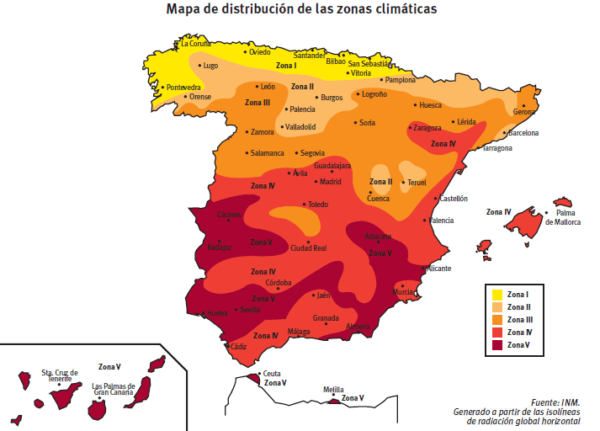
The Photovoltaic Geographic Information System of the European Union may also be useful to you. Through this platform you can estimate the solar production of a photovoltaic installation in your location.
To calculate the kWh generated per year by a solar panel , you can apply the following formula:

Let’s say that we have a 450 W solar panel and that our country house is in Granada, with an annual average of 1,670 hours of light at full capacity. To estimate the kWh that panel generates per year, it will be necessary to perform the following calculation:

If we want to know the monthly or daily average, we only have to divide the 676.35 kWh by 12 (56.36 kWh per month) or by 365 (1.85 kWh per day), but be careful, keep in mind that the daily production will not be the same in the summer months as in the winter months.
What area do I need to install solar panels in a country house or isolated house
Another element to take into account is the surface you have for the solar panels, as well as its characteristics (orientation, inclination, shadows).
For example, if you choose to install 450Wp monocrystalline solar panels, you should know that their size is 2108 x1048 x40 mm (just over 2 m2 ) . If you have an area of 26 m 2 , you can install a maximum of approximately 12 of this type of photovoltaic panels. This will also depend on how they are installed (in pairs or trios, horizontally or vertically, etc.).
However, to calculate the surface you must discount the obstacles that you can find. These can be physical (chimney, ventilation or window elements in the attic) and that directly prevent the placement of the plates; or in the form of shadows that can limit the power of the affected solar panel and the rest of the panels in the same chain connected in series (for example a tree).
You should also take into account two other fundamental elements. One, the orientation , the South orientation (South-East, South-West) being recommended, as it is the one that receives the greatest solar radiation in the Northern Hemisphere. However, there may be times when we are interested in other types of orientations.
On the other hand, the inclination of our solar panels. Although the angle of incidence of the sun varies throughout the year, given the complication caused by the change in inclination, it is advisable to study the most optimal global inclination, but always bearing in mind that in most cases the most indicated, if they are going to be installed on a sloping roof, it is done with an installation coplanar to it. In this way we will save on materials, we will reduce the visual impact of the plates with a better architectural integration of the same and we will prevent them from creating a sail effect.
In the event that you do not have enough space on the roof for the photovoltaic installation that you had in mind, you can choose to install them in solar parking lots, on a pergola, etc.
Calculate the number of solar panels you need
To roughly calculate the number of solar panels you will need, you can apply the following formula:

Unlike a self-consumption installation connected to the grid, in an isolated photovoltaic installation you will need to generate more energy than you consume at the moment. The reason is simple, you must ensure that you have electricity when the solar panels do not produce enough. And for this reason, solar kits for isolated housing include a storage system in the form of solar batteries .
Therefore, to calculate the number of solar panels for a country house, you need to take into account the hours at which you make consumption . If the greatest consumption falls during the day, you will need to store less energy for the night. On the other hand, if the greatest consumption is made in the hours with less solar radiation or directly without it, you will need more electricity storage capacity.
In turn, it is important to take as a reference the calculation of the energy you need in the months of lower photovoltaic production . These months are the winter months, when the estimated production may be 50% less than in the summer.
According to this, if we have a daily consumption of 10 kWh in winter and the production that we previously calculated for each solar panel (1.85 kWh) must be reduced by half, the calculation to be carried out would be as follows:

In other words, to satisfy 100% of consumption, we should install at least 11 solar panels.
However, we must take into account that in the summer we would produce twice as much electricity. Therefore, if we do not want to oversize the installation for the summer months, you can install 8 or 10 solar panels and use a backup generator for the months of December and January.

